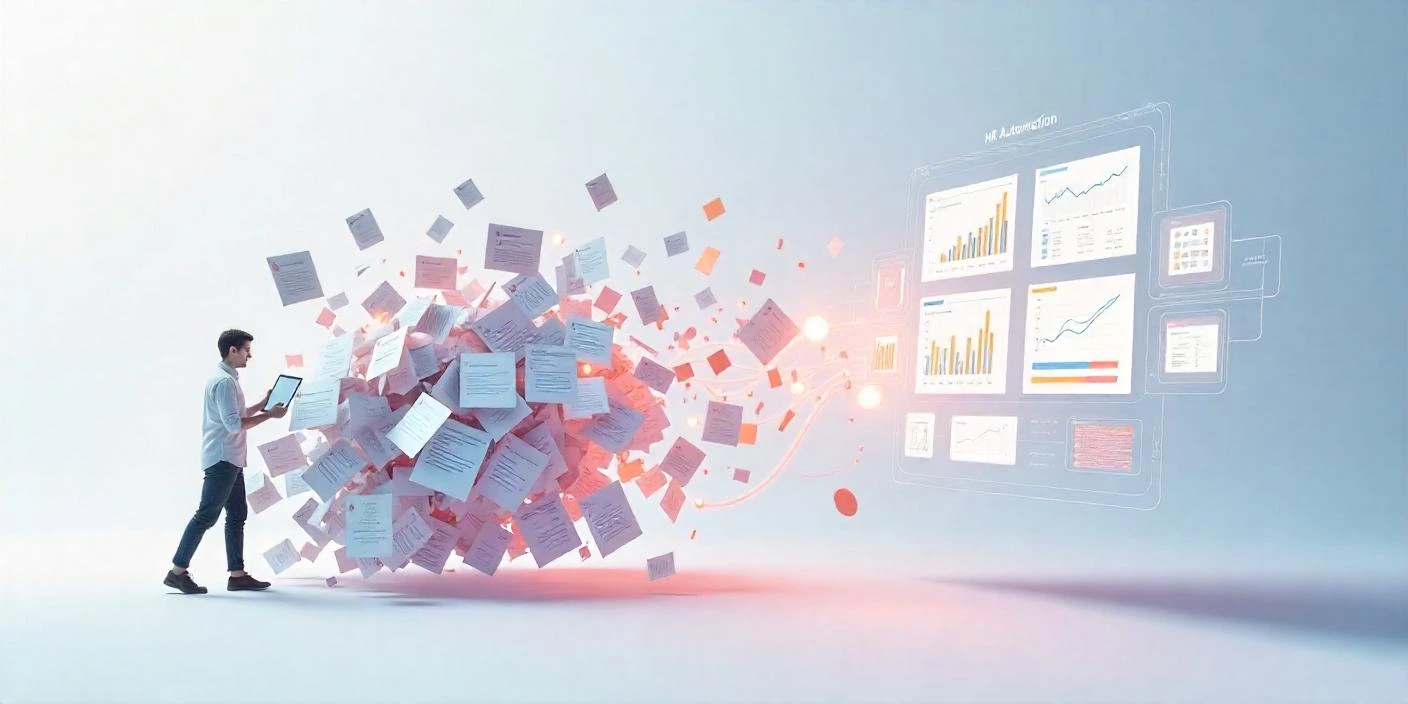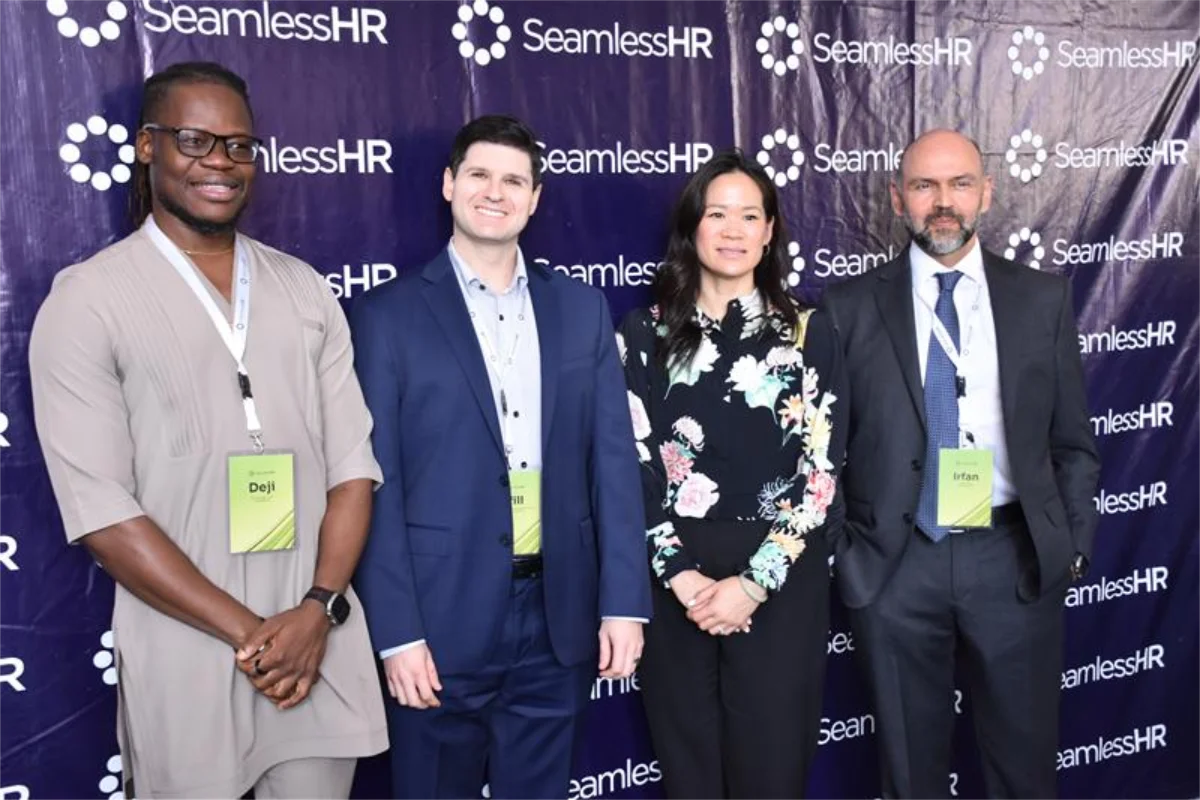The world of HR has come a long way; from personnel management to people strategy, from administrative support to culture drivers. But when it comes to technology, many HR teams are still operating in the past. While every other department has embraced tools to boost efficiency and performance, HR is often left juggling emails and disjointed systems.
And in the process, it’s missing out on something critical: data.
Every day, HR generates valuable insights — from how long employees spend at work, to patterns in leave requests, engagement signals, and more. But without intelligent systems to capture and connect it all, that data is lost in the shuffle; buried in inboxes, forgotten in files, or scattered across tools that don’t talk to each other.
It’s not because HR lacks complexity or impact. In fact, HR handles some of the most sensitive, strategic, and far-reaching processes in any organisation — from hiring and onboarding to performance, payroll, and employee engagement.
So why is it that, in this intelligence age, HR automation still isn’t standard in most organisations — or even expected — the way it is for every other function?
The Department Tech Divide
“Finance has modern integrated dashboards, Support uses help-desks. What’s HR still using — disjointed systems that don’t talk to each other and email?”
Let that sink in.
In this current world of work, technology is the default infrastructure for decision-making. Customer Support operates on helpdesk software to manage customer interactions. Finance has dashboards tracking every Dollar in real time. Operations rely on automation to streamline logistics.
But HR?
- Still emailing for approvals.
- Still chasing documents.
- Still using multiple systems; updating timesheets on one system and running payroll on another system.
And yet, HR is responsible for the people who keep every other department running. If that doesn’t sound backward, what does?
So why is HR still stuck? And more importantly, what’s the real cost of staying there?
The Hidden Cost of Being Left Behind
HR Has the Data. But with Disjointed Systems.
Every day, your organisation generates valuable HR data — clock-ins and outs, leave requests, feedback submissions, performance inputs, compliance logs, payroll updates. It’s all there.
But here’s the catch: most HR teams can’t access this data in real time, or at all.
Why? Because it’s trapped in scattered systems, spreadsheets, and manual processes that don’t talk to each other.
While other departments thrive on unified data to drive decisions, HR is left digging through email threads, switching between systems, or relying on outdated reports.
That disconnect doesn’t just slow things down — it keeps HR blind to data trends, risks, and opportunities that could shape the future of the workforce.
Let’s break it down:
- Delayed decisions: When HR data is scattered across tools or buried in emails, leaders can’t access real-time insights. And decisions made on gut feelings alone? That’s no longer acceptable in 2025.
- Errors in payroll: Manual and slow payroll processes aren’t just tedious, they’re risky. A single mistake can affect hundreds of employees, create compliance issues, and damage trust.
- Inconsistent performance management: Without a structured, automated approach, performance reviews are often skipped, rushed, or biased, leading to disengagement and unclear growth paths.
- Wasted time on admin: HR teams spend 40–60% of their time on repetitive tasks that could be automated — according to McKinsey. That’s time that could be spent shaping culture, developing talent, or advising leadership.
- Damaged employee experience: Clunky processes affect more than HR — they frustrate employees. From onboarding to requesting leave, every interaction with HR reflects the company culture. And when systems fail, so does perception.
Here’s the reality:
“If your HR processes feel slow, disjointed, or reactive — it’s not your people. It’s your systems.”
According to a study we did about the state of HR Operations in Africa, 53.6% of respondents say they plan to automate HR processes within the next 12 months. That’s over half the continent’s HR leaders recognising that their current tools aren’t enough.
Those who don’t act soon? They risk being left behind by their peers — and by their own people.
Why This Gap Exists
So how did we get here? Why is HR — one of the most critical business functions — still lagging behind?
A few hard truths:
- HR was historically seen as ‘support,’ not strategic.
For decades, HR was tasked with execution, not insight. Hiring. Firing. Filing. Not strategy, analytics, or growth. - Technology investments prioritised revenue-first departments.
Support needed a help desk. Finance needed integrated accounting tools. Operations needed ERPs. HR? Often got “free” software or basic disjointed tools, not built for modern teams or African markets. - Expectations shifted — but the systems didn’t.
Today’s HR leaders are being asked to drive culture, boost retention, improve performance, and advise the C-suite. But they’re doing all this while stuck with tools that barely support basic tasks. - Valuable data is generated every day — and wasted.
HR touches every part of the employee journey: log-ins and log-outs, leave requests, overtime hours, training progress, performance feedback. But without a unified system, all that data gets lost in emails, spreadsheets, or scattered tools. Insights that could drive real business impact go untapped.
“It’s like being asked to run a marathon with one shoe and a map.”
According to Gartner, over 70% of CHROs report being asked to lead enterprise-wide transformations — yet only 24% feel equipped with the necessary tools and data to do so effectively.
And that’s the problem:
HR is expected to lead like a strategist, but still equipped like an administrator.
Without the right unified system, especially HR automation system that connects data, streamlines workflows, and eliminates manual bottlenecks — HR will always be playing catch-up.
Until that gap is closed, no matter how brilliant the team is, HR will stay two steps behind.
What HR Needs — And What’s at Stake Without It
Let’s flip the script.
What if HR had what finance and support have — a centralised, automated, intelligent system built for clarity, speed, and results?
Imagine logging into one end-to-end platform like SeamlessHR, that is powered by automation for HR, where everything is connected:
- Your talent data, organised and updated in real time
- Payroll and compliance, automated and error-free
- Performance and engagement tools, always-on and consistent
- And reports, not spreadsheets, driving business decisions in leadership rooms
This isn’t wishful thinking. This is what modern, automated HR looks like.
And it solves a deeper issue: HR generates valuable data every single day — but most of it goes unused.
Every check-in time, every leave request, every performance review, and feedback form holds insights. But when systems are fragmented and manual, that data slips through the cracks. The cost isn’t just inefficiency — it’s invisibility.
HR automation doesn’t replace people — it empowers them. It connects the dots, unlocks insights, and reduces the noise of admin so HR can focus on impact.
But here’s what’s at stake if nothing changes:
- Top talent won’t stay where internal processes feel broken
- People teams burn out, stuck in reactive loops instead of proactive strategy
- Business leaders stop listening to HR when the data isn’t ready — or worse, isn’t trusted
- And most critically: the business suffers from decisions made without the right people insights
According to our study, over 53.6% of HR leaders across Africa are planning to automate in the next 12 months. If you’re not among them, you’re not just behind — you’re widening the gap.
Because in 2025, “doing HR with disjointed systems or manually” isn’t dedication — it’s a risk you can’t afford.
So… What Does HR Really Have — and Where Is It Headed?
If your honest answer is forms, files, multiple disjointed systems and frustration, it’s time to step back and ask: Is this sustainable?
Because it’s not about having more tools — it’s about having the right unified system. One that’s integrated, intelligent, and built to support a growing, evolving workforce. A system that doesn’t just digitise paper — but transforms how HR works altogether.
The truth is, HR automation is no longer a future trend. It’s the new baseline. Businesses that get it are already moving — building smarter people operations, unlocking data, and freeing their teams to lead, not chase approvals.
So the question for HR leaders is no longer if you should automate — but how soon.
Now is the time to:
- Reflect honestly on what your team spends time doing
- Start the internal conversation about where you’re falling short
- Explore platforms built to unify your HR functions and scale your impact
You’re not just managing people. You’re shaping the future of work. The systems you choose will determine how far — and how fast — your team can go.
So if your current tools are slowing you down, it’s time to stop patching the process and start exploring HR automation
What to Do Now!
See a demo. Ask the hard questions about HR automation. And find out how SeamlessHR can help you stop managing chaos — and start leading with clarity.






